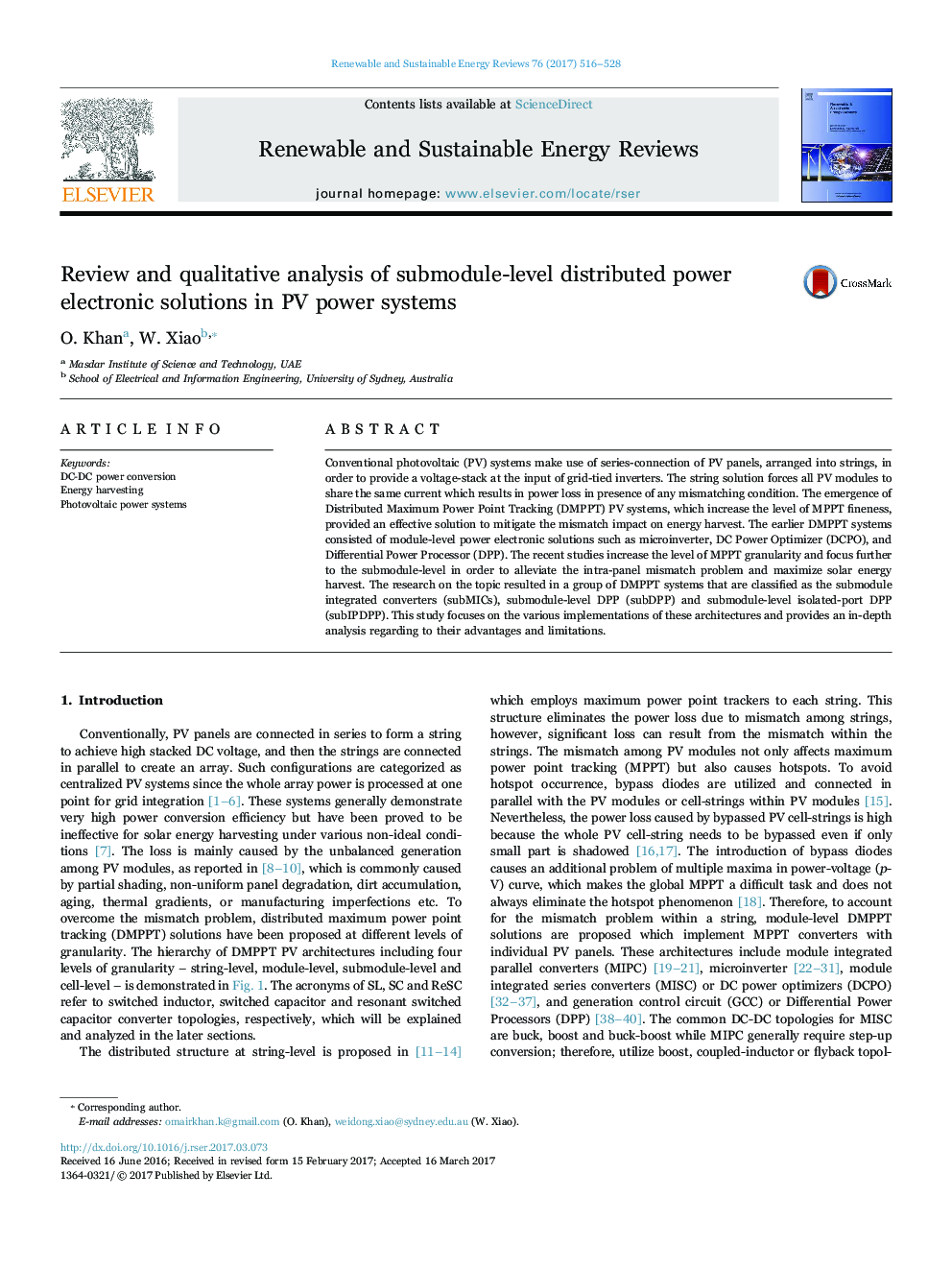| Article ID | Journal | Published Year | Pages | File Type |
|---|---|---|---|---|
| 5482175 | Renewable and Sustainable Energy Reviews | 2017 | 13 Pages |
Abstract
Conventional photovoltaic (PV) systems make use of series-connection of PV panels, arranged into strings, in order to provide a voltage-stack at the input of grid-tied inverters. The string solution forces all PV modules to share the same current which results in power loss in presence of any mismatching condition. The emergence of Distributed Maximum Power Point Tracking (DMPPT) PV systems, which increase the level of MPPT fineness, provided an effective solution to mitigate the mismatch impact on energy harvest. The earlier DMPPT systems consisted of module-level power electronic solutions such as microinverter, DC Power Optimizer (DCPO), and Differential Power Processor (DPP). The recent studies increase the level of MPPT granularity and focus further to the submodule-level in order to alleviate the intra-panel mismatch problem and maximize solar energy harvest. The research on the topic resulted in a group of DMPPT systems that are classified as the submodule integrated converters (subMICs), submodule-level DPP (subDPP) and submodule-level isolated-port DPP (subIPDPP). This study focuses on the various implementations of these architectures and provides an in-depth analysis regarding to their advantages and limitations.
Related Topics
Physical Sciences and Engineering
Energy
Renewable Energy, Sustainability and the Environment
Authors
O. Khan, W. Xiao,
